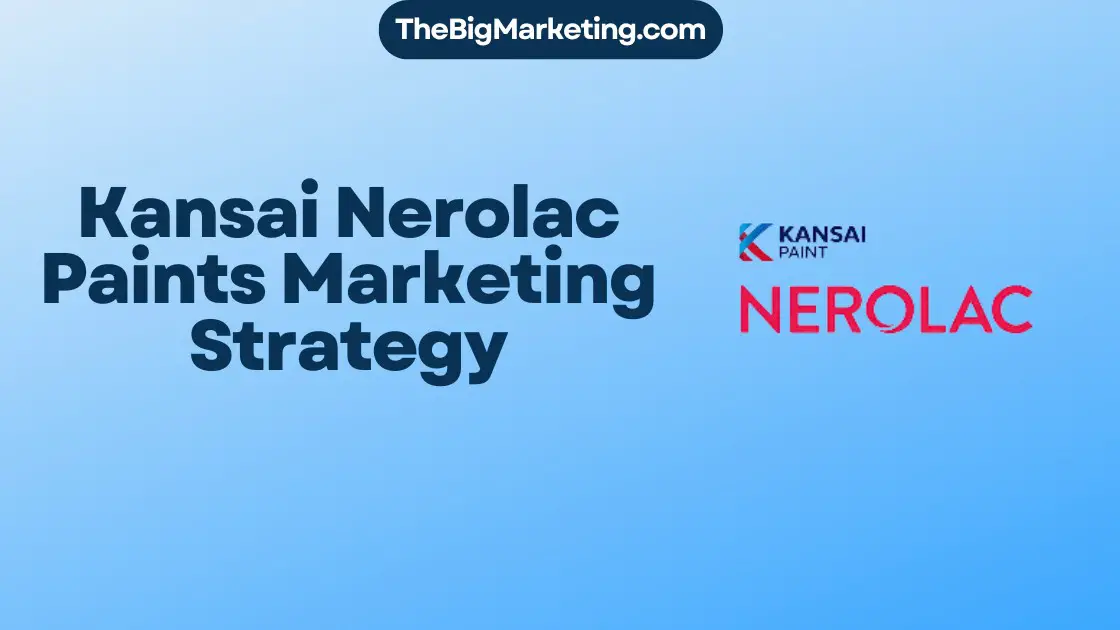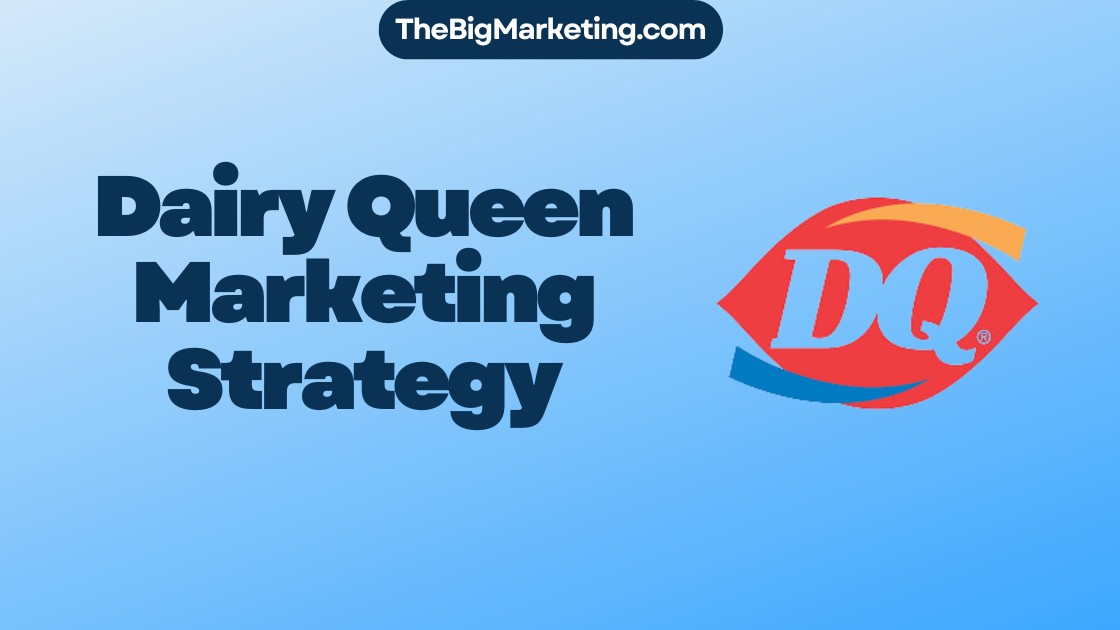Middle-of-funnel (MOF) marketing is a crucial stage in the customer journey. It occurs after potential customers have moved beyond the initial awareness stage and are seriously considering your product or service. MOF, also known as the “consideration” stage, is where you have the opportunity to build a meaningful relationship and guide prospects towards conversion.
During the middle of the funnel, you need to employ unique strategies and tactics to educate, nurture, and build trust with potential customers. This stage plays a pivotal role in the customer journey, as it is where you provide detailed information about your offering and establish a rapport with prospects.
To effectively engage potential customers in the middle of the funnel, targeted and valuable content is key. This content should address their specific needs and provide detailed information about your product or service. By creating content that resonates with prospects, you can foster meaningful relationships and guide them towards the bottom of the funnel.
Key Takeaways:
- Mid funnel marketing occurs after the awareness stage and focuses on building relationships with potential customers.
- Creating targeted and valuable content is essential in the middle of the funnel to educate prospects and establish trust.
- Middle-of-funnel marketing plays a critical role in guiding prospects towards conversion and optimizing the marketing funnel.
- Effective communication and clear calls to action are crucial in the middle of the funnel to enhance the overall customer experience.
- Lead scoring and qualification, along with improving internal handoff procedures between marketing and sales, are essential for successful middle-of-funnel marketing.
The Importance of Middle-of-Funnel Marketing
Middle-of-funnel (MOF) marketing plays a crucial role in converting leads into customers. While often overlooked, a strong middle-of-funnel strategy is essential to prevent leads from losing interest in your brand or turning to competitors. This stage, also known as the consideration stage, focuses on lead nurturing and qualification, guiding potential customers towards making a purchase decision. By effectively implementing middle-of-funnel marketing tactics, you can build relationships and generate high-quality leads that are more likely to convert.
An integral aspect of middle-of-funnel marketing is lead nurturing. This involves providing valuable content and educational resources to potential customers, keeping them engaged and informed throughout their buyer’s journey. By nurturing leads, you establish trust and credibility, increasing the likelihood of conversion. Additionally, lead qualification ensures that you prioritize and focus your efforts on the most promising leads, maximizing your marketing resources and optimizing your overall ROI.
A smooth handoff between your marketing and sales teams is another critical benefit of middle-of-funnel marketing. Effective communication and collaboration between these teams ensure a seamless transition from marketing-generated leads to sales interactions. This alignment eliminates friction and confusion, improving the overall customer experience and increasing the chances of successful conversions.
In summary, middle-of-funnel marketing delivers value by nurturing and qualifying leads, guiding them towards making a purchase, and facilitating a seamless handoff between marketing and sales teams. By investing in middle-of-funnel strategies, you generate better leads, build relationships with potential customers, and ultimately drive successful conversions.
Creating Targeted Content
When it comes to engaging potential customers in the middle of the funnel, creating targeted content is key. This means developing content that is specifically tailored to their needs and interests, making it relevant, valuable, and interesting. By doing so, you can effectively communicate the benefits and value of your offering while subtly encouraging them to take action.
To create targeted content, it’s important to begin by understanding your audience. Segment them based on their interests, needs, and behaviors, and then tailor your messaging to each specific group. This allows you to deliver content that resonates with them directly and addresses their unique pain points.
Personalization takes targeted content a step further by customizing your sales and marketing messages to each individual customer. By leveraging data and insights, you can create a more personalized experience that speaks directly to their needs and preferences.
Incorporating targeted content into your middle-of-funnel marketing efforts helps build stronger relationships with potential customers. It demonstrates that you understand their individual needs and are committed to providing valuable solutions. This, in turn, increases their trust and confidence in your brand, moving them closer to making a purchase.
To illustrate the power of targeted content, consider the following example:
| Segment | Content Type | Key Messaging |
|---|---|---|
| Small Business Owners | Blog Articles | How to streamline your business operations and improve productivity |
| Marketing Professionals | Case Studies | How our marketing automation platform increased ROI by 30% |
| IT Managers | Webinar | Exploring the latest cybersecurity trends and best practices |
| Sales Teams | White Paper | Unlocking the secrets to closing more deals and increasing revenue |
By consistently creating targeted content that speaks directly to the needs and interests of your audience, you can effectively engage potential customers in the middle of the funnel. It helps to educate and inform them about your offerings while building a strong foundation for lasting relationships.
Email Marketing and Nurture Campaigns
Email marketing is a crucial component of middle-of-funnel marketing strategies. It allows businesses to connect with potential customers directly and deliver targeted content that resonates with their interests and needs. By creating nurture campaigns, you can provide valuable information, updates, and educational content that helps prospects learn more about your brand and offerings.
Through email communication, you can build relationships with leads and engage them in meaningful conversations. This engagement plays a significant role in moving leads closer to making a purchase and becoming loyal customers. With the power of email marketing, you can stay top-of-mind and nurture leads throughout their decision-making process.
Personalization and segmentation are key factors in successful email marketing campaigns. By segmenting your audience based on their specific interests, behaviors, or demographics, you can send targeted emails that speak directly to their needs. This customization enhances the effectiveness of your campaigns and increases lead engagement and response rates.
To effectively leverage email marketing in your nurture campaigns, consider these best practices:
- Create a compelling subject line that grabs attention and entices recipients to open your email.
- Use personalized greetings and messaging to establish a connection with the recipient.
- Provide valuable and informative content that addresses specific pain points and educates leads about your solutions.
- Include clear and compelling calls-to-action (CTAs) that direct leads towards the next step in their buyer’s journey.
- Optimize your emails for mobile devices to ensure a seamless experience for all recipients.
- Monitor and analyze email engagement metrics to refine your strategies and continuously improve your campaign performance.
An effective email marketing strategy coupled with well-crafted nurture campaigns can significantly contribute to lead nurturing and conversion rates. By delivering relevant and targeted content directly to your leads’ inboxes, you have the opportunity to build strong relationships, establish trust, and guide them towards making a purchase decision.
Implementing strategic email marketing and nurture campaigns enhances your middle-of-funnel marketing efforts and increases lead engagement, ultimately driving conversions and nurturing long-term customer relationships.
| Benefits of Email Marketing and Nurture Campaigns | How They Contribute to Lead Nurturing |
|---|---|
| Email marketing allows direct communication with potential customers | Nurture campaigns provide valuable information and updates |
| Personalization and segmentation increase email effectiveness | Engagement through emails builds relationships with leads |
| Emails keep leads top-of-mind | Nurture campaigns guide leads through the buyer’s journey |
| Email marketing improves lead engagement and response rates | Nurture campaigns nurture leads towards making a purchase |
Educational Content and How-To Guides
In the middle of the funnel, potential customers are actively seeking more detailed information about your brand and offerings. To satisfy their curiosity and build trust in your brand, it is crucial to create educational content and how-to guides that provide valuable insights and actionable steps.
Educational content serves as a valuable resource that addresses the pain points of your target audience and showcases the unique value your brand provides. By offering informative and engaging content, you can empower customers to make more informed decisions and move closer to making a purchase.
How-to guides are an effective way to walk your prospects through specific processes or tasks related to your products or services. They provide step-by-step instructions, visuals, and real-life examples to help customers understand how to utilize your offerings to their full potential.
Product demos offer an interactive experience that allows potential customers to see your product in action. By demonstrating the features, benefits, and use cases of your offerings, you can provide a clear understanding of how they can solve customers’ problems and meet their needs.
Instructional content, such as tutorials and workshops, goes beyond the surface-level information to provide in-depth insights and practical knowledge. This type of content demonstrates your expertise and positions your brand as a go-to resource in your industry.
By consistently providing informative and valuable content throughout the middle of the funnel, you can establish yourself as a trusted authority and guide prospects towards confident decision-making.
Easy Communication and Clear CTAs
In the middle of the funnel, it’s important to make communication with potential customers easy and seamless. This helps in building trust and providing a positive experience. Utilizing tools such as chatbots, quizzes, and FAQ libraries can help provide quick answers to customer queries, resulting in easy communication and better customer service. By addressing customer inquiries promptly, you can avoid frustrations and ensure a smooth customer journey. Easy communication is key to keeping potential customers engaged and interested in your brand.
In addition to easy communication, clear calls to action (CTAs) are essential for guiding leads along the desired path. A well-designed CTA prompts potential customers to take the next step and simplifies the decision-making process. An effective CTA clearly states what action the customer needs to take, such as “Request a demo” or “Sign up for a free trial.” By providing clear CTAs, you make it easier for leads to navigate through the middle of the funnel and convert into customers.
Lead Scoring and Qualification
Lead scoring is a vital process in middle-of-funnel marketing that enhances lead qualification efforts. By assigning a numerical score based on their behavior and level of interest, you can quickly identify prospects with a higher potential win rate and a greater likelihood of becoming customers. This method allows you to prioritize your lead nurturing efforts and focus on leads with the highest potential for conversion.
Lead nurturing strategies work hand in hand with lead scoring to maintain valuable relationships with leads and guide them through the marketing funnel. By providing personalized and relevant content that addresses their interests and pain points, you can further engage potential customers and build trust in your brand.
Effective lead qualification and nurturing are integral to converting leads into loyal customers. By leveraging lead scoring, you can identify the prospects who are most likely to make a purchase and provide them with the necessary support and information throughout their journey. This targeted approach increases the efficiency of your sales efforts and helps you achieve higher conversion rates.
Benefits of Lead Scoring and Qualification
- Improved efficiency: Lead scoring streamlines the qualification process, allowing your sales team to prioritize their efforts on high-potential prospects.
- Increased win rate: By focusing on leads with a higher likelihood of conversion, your win rate is likely to improve, leading to more closed deals.
- Enhanced lead nurturing: Combining lead scoring with effective lead nurturing strategies ensures that your prospects receive personalized and relevant information to support their decision-making process.
- Optimized resource allocation: By allocating your resources to leads with the highest potential, you can maximize your marketing and sales efforts, resulting in improved ROI.
Implementing Lead Scoring and Qualification
To implement lead scoring and qualification effectively, consider the following steps:
- Define scoring criteria: Determine the key behaviors and attributes that indicate a lead’s level of interest and potential for conversion.
- Assign point values: Establish a numerical scoring system that assigns points to each behavior or attribute, with higher scores indicating higher potential.
- Set thresholds: Determine the cut-off point for leads that meet the qualification criteria, allowing your sales team to focus on the most promising prospects.
- Automate the process: Implement a CRM system or marketing automation platform that can track lead behavior, calculate scores, and assign leads to the appropriate nurturing processes.
- Continuously evaluate and refine: Regularly review and update your scoring criteria based on feedback from your sales team and the performance of your leads.
By implementing effective lead scoring and qualification processes, you can optimize your marketing and sales efforts, increase your win rate, and ultimately drive more conversions.
Improving Internal Handoff Procedures
Effective internal handoff procedures are essential for optimizing middle-of-funnel marketing and ensuring seamless collaboration between the marketing and sales teams. With clear and efficient handoff processes, you can enable a smooth transition for qualified leads and enhance the overall customer journey.
Marketing and sales alignment is crucial in guiding leads towards making a purchase. By fostering strong communication and collaboration between these teams, you can prevent any potential slowdowns or confusion that may arise during the handoff process.
Streamlining the Handoff Process
To improve internal handoff procedures, it is important to establish a clear set of guidelines and protocols. This ensures that both teams understand their roles and responsibilities during the handoff, reducing any chances of miscommunication or missed opportunities.
Regular meetings and open lines of communication between marketing and sales teams facilitate a smooth handoff process. By sharing insights, feedback, and valuable lead information, both teams can align their efforts and work towards a common goal of converting leads into customers.
Collaboration and Knowledge Sharing
Collaboration is key when it comes to effective internal handoff procedures. Encouraging collaboration between marketing and sales teams fosters a better understanding of customer needs, pain points, and preferences. This shared knowledge helps in tailoring marketing messages and strategies, ensuring consistent and targeted interactions with potential customers.
Creating a centralized system or platform for lead information and progress tracking simplifies the handoff process. This allows both teams to access the most up-to-date lead data, ensuring that no lead falls through the cracks and that every prospect receives the attention they need to move closer to making a purchase.
Measuring and Optimizing Results
Regularly monitoring and measuring the effectiveness of internal handoff procedures is crucial. By tracking metrics such as conversion rates, lead response time, and lead quality, you can identify areas for improvement and make data-driven adjustments to the handoff process.
Consider implementing a lead scoring system that helps prioritize leads based on their level of engagement and likelihood to convert. This ensures that the most qualified leads receive immediate attention from the sales team, maximizing conversion opportunities.
Improving internal handoff procedures is vital for seamless collaboration and optimal lead conversion in middle-of-funnel marketing. By prioritizing marketing and sales alignment, streamlining the handoff process, promoting collaboration, and continuously measuring results, you can establish an efficient and effective internal handoff framework.
Middle-of-Funnel Content Ideas
When it comes to executing a successful middle-of-funnel marketing strategy, having a variety of content ideas that align with your overall approach is crucial. By providing potential customers with valuable and relevant content, you can educate, engage, and nurture their interest in your brand. Here are some effective content ideas to consider:
Email Nurture Campaigns
Email nurture campaigns are a powerful tool in the middle of the funnel. They allow you to deliver targeted content directly to your leads’ inboxes, keeping them informed and engaged. These campaigns can include educational resources, product updates, case studies, and personalized offers. By consistently nurturing leads through email, you can build trust and guide them closer to making a purchase.
Videos
Videos are highly engaging and impactful content assets that can effectively communicate your brand’s value proposition. Create detailed videos that highlight your products or services, showcase customer success stories, or provide educational tutorials. By bringing your brand to life through video content, you can capture the attention of potential customers and effectively convey key messages.
Webinars
Webinars offer a unique opportunity to interact with your audience in real-time and provide in-depth information about your industry and offerings. Host webinars on topics that align with your target audience’s interests and pain points. Provide valuable insights, demonstrate your expertise, and engage participants through interactive sessions. Webinars are a great way to establish thought leadership and build relationships with potential customers.
White Papers
White papers are comprehensive reports or guides that delve into specific topics or industry trends. They offer in-depth analysis, research findings, and actionable insights. By sharing well-researched white papers, you can position your brand as a knowledgeable authority in your industry. Use white papers to educate leads, address their pain points, and present your brand’s solutions as valuable resources.
Industry Reports
Industry reports provide valuable data, trends, and analysis about a specific market or sector. Create industry reports that highlight key statistics, emerging trends, or challenges within your industry. These reports can position your brand as a trusted source of information and help potential customers make informed decisions. Share industry reports through your website, social media channels, and email campaigns for maximum reach and impact.
Social Media Content
Social media content plays a crucial role in engaging potential customers and building brand awareness. Develop social media posts that provide educational content, industry insights, and behind-the-scenes glimpses of your brand. Incorporate visuals, storytelling, and compelling messaging to capture attention and encourage interaction. Leverage social media platforms such as Facebook, Instagram, LinkedIn, and Twitter to reach your target audience effectively.
By leveraging these content ideas – email nurture campaigns, videos, webinars, white papers, industry reports, and social media content – you can effectively engage and nurture potential customers in the middle of the funnel. Remember, the key is to provide valuable and relevant content that guides leads towards making a well-informed purchasing decision.
The Role of Middle-of-Funnel Marketing in the Overall Funnel
The marketing funnel consists of three stages: top-of-funnel, middle-of-funnel, and bottom-of-funnel. Each stage plays a vital role in converting leads into customers. Middle-of-funnel marketing is crucial in the buyer’s journey as it nurtures leads, educates them about your brand and offerings, and moves them closer towards making a purchase. Without a strong middle-of-funnel strategy, lead generation and lead conversion efforts may not yield the desired results. Understanding the importance of middle-of-funnel marketing and its role in the overall funnel is key to driving successful conversions.
| Stage | Objective | Key Actions |
|---|---|---|
| Top-of-Funnel | Awareness | – Attracting a wide audience – Generating leads through content – Building brand awareness |
| Middle-of-Funnel | Consideration | – Nurturing leads with targeted content – Educating about offerings – Building relationships – Filtering highest-quality leads |
| Bottom-of-Funnel | Conversion | – Convincing leads to make a purchase – Providing persuasive offers – Facilitating a seamless purchase experience |
In the middle of the funnel, potential customers have already entered the consideration stage. They are actively seeking information and evaluating their options. Middle-of-funnel marketing is your opportunity to showcase the value of your products or services and guide leads towards making a purchasing decision.
During this stage, effective lead nurturing plays a critical role. Nurturing leads involves providing them with valuable content, such as educational articles, case studies, or webinars, that addresses their pain points, answers their questions, and positions your brand as a trusted authority in the industry.
Lead nurturing can be facilitated through various channels, including email marketing, targeted social media campaigns, and remarketing efforts. By delivering relevant content to leads at the right time, you can keep them engaged and increase the likelihood of conversion.
The Buyer’s Journey
To understand the role of middle-of-funnel marketing, it is important to grasp the concept of the buyer’s journey. The buyer’s journey refers to the process that potential customers go through from the initial awareness of a problem or need to the final purchase decision.
In the middle of the buyer’s journey, leads have already recognized a problem and are actively researching potential solutions. They are comparing different brands and evaluating which one best meets their needs. This is where middle-of-funnel marketing comes into play, providing leads with the information and resources they need to make an informed decision.
By focusing on lead generation, lead nurturing, and lead conversion in the middle of the funnel, you can optimize your marketing efforts and drive successful outcomes. Middle-of-funnel marketing helps qualify leads, build relationships, and guide them towards the final stage of the funnel, where they become loyal customers.
Investing in a solid middle-of-funnel marketing strategy ensures that you are effectively engaging your audience and maximizing conversion opportunities. By understanding the role of middle-of-funnel marketing in the overall funnel, you can tailor your marketing efforts to move leads seamlessly through each stage and achieve your conversion goals.
Conclusion
Middle-of-funnel marketing is a crucial stage in the customer journey, where potential customers transition from the awareness stage to the consideration stage. It is during this stage that targeted and valuable content, along with effective lead nurturing and qualification, play a significant role in guiding leads towards making a purchase. Middle-of-funnel marketing aims to educate leads about your brand, build relationships, and filter out the highest-quality leads for the sales team to focus on.
By implementing middle-of-funnel strategies, you can optimize your marketing funnel and drive conversions. This involves creating content that resonates with potential customers at this stage, addressing their needs and offering solutions. It also includes nurturing leads through personalized communication, such as email nurture campaigns, and utilizing lead scoring and qualification techniques to identify the most promising prospects.
Additionally, middle-of-funnel marketing ensures a smooth and seamless transition between the marketing and sales teams, emphasizing the importance of internal handoff procedures and collaboration. By aligning these teams and streamlining the handoff process, you can effectively guide qualified leads towards making a purchase, improving both the lead conversion rate and overall sales performance.
Incorporating middle-of-funnel marketing into your content marketing strategy provides a balanced approach to the entire marketing funnel. By focusing on education, relationship-building, lead nurturing, and qualification, you can successfully guide leads through the customer journey and enhance their overall experience with your brand. So, make sure to prioritize middle-of-funnel marketing to maximize your marketing efforts and achieve sustainable business growth.



